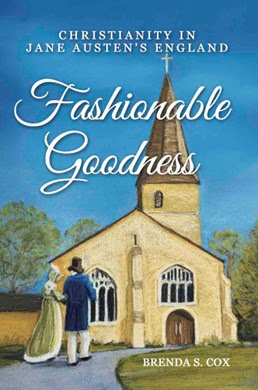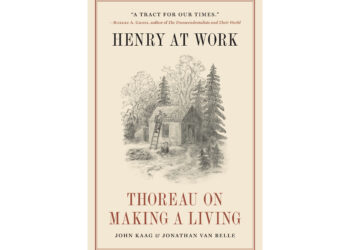Back when the Kindle was still a relative novelty, I came across a digital essay entitled Jane Austen’s Clerical Characters by Anglican priest, Michael Giffin. His paper, originally presented at the 2012 meeting of the Jane Austen Society of North America (JASNA), led me in turn to Irene Collins’ book, Jane Austen and the Clergy (Hambledon Press, 1994). For those seeking a serious orientation in the profession of the Church as portrayed in Jane Austen’s novels, her book is an accepted and authoritative resource.
Collins provides an overview of the obligations of a working cleric and the constraints under which that class operated. The book is a counter-balance for those who think Mr. Collins in Pride and Prejudice was the tiresome norm. It is informative and well-structured, covering the basics of education, income, housing, etc. Where I perceived a gap in her work was in the chapter covering Worship and Belief. Collins provides an overview of the spirituality of the period but not much in the way of common day-to-day requirements. The chapter lacked the depth of detail needed for today’s students who may never have set foot in a church of any sort, much less the Church of England with its historic decentralization, formal liturgical practices and heritage of the Book of Common Prayer. The reader lacking exposure to the service of Morning Prayer would come away no wiser. They still wouldn’t understand why one might maneuver to escape (as Lydia Bennett does) the tedium of hearing one of Fordyce’s sermons.
 The gap in Collins’ work has recently been filled by Brenda S. Cox. I learned of her new book published in 2022 through one of the many Austen-oriented blogs praising its usefulness and, specifically in the case of one or two, praising the value of its bibliography. Familiar with the joys of a really worthwhile bibliography, I downloaded an ebook edition of Fashionable Goodness: Christianity in Jane Austen’s England.
The gap in Collins’ work has recently been filled by Brenda S. Cox. I learned of her new book published in 2022 through one of the many Austen-oriented blogs praising its usefulness and, specifically in the case of one or two, praising the value of its bibliography. Familiar with the joys of a really worthwhile bibliography, I downloaded an ebook edition of Fashionable Goodness: Christianity in Jane Austen’s England.
How does Cox fill in the gaps? There are both general as well as specific examples. She takes the time to differentiate between the services of Morning Prayer, Evening Prayer, and the family gathering for daily morning prayers. She identifies in a fairly simple manner the various groups labeled as dissenters in Georgian England as well as discussing the reforms and revivals that the Evangelical clergy sought to introduce.
Cox also aids the reader in understanding some of the passing references appearing in Austen’s novels that might otherwise be passed over. As an example, a comment or two appears in Mansfield Park regarding sermons written by a clergyman named Blair. Querying Google with something as basic as [Blair sermons “Mansfield Park”] can produce relevant material but the results are disordered and combing through the result set is time-consuming. A chapter by Cox provides sufficient information on the sermons by Hugh Blair, James Fordyce and a variety of others without overwhelming the reader. The detail included is appropriate to the context of Jane Austen’s familiarity with them and useful in a way that the Wikipedia entry on Blair simply doesn’t replicate.
Collins’ book, Jane Austen and the Clergy references the reform work of William Wilberforce but only at a very high level, focusing on avoidance of individual acts of behavioral vice. She offers no discussion of any movement to abolish the slave trade in England. By contrast, Cox in Fashionable Goodness offers a full chapter on the activities of Wilberforce, subsequently followed by another chapter on the topic of abolitionist movement and one on parishioners of color.
Fashionable Goodness is an enjoyable book for any Jane-ite but, in my opinion, if funding allows, it belongs as well in a larger library collection. It is a well-researched complement to the scholarship of Irene Collins, illuminating some of the odd corners, some of the overlooked cultural elements encountered in reading Jane Austen. I’d like to think that both volumes would sit side-by-side on the library shelf. Sadly, there will be challenges in ensuring that kind of inclusion. At least in part, that is because the book was self-published.
Now the author did everything she ought to have done to deliver a good product and enable discovery. Her copyright page includes the name of the independent book editor who gave her assistance as well as the name of the cover artist. She has an ISBN for the book (9798986601601) – not just Amazon’s own proprietary ASIN. The Library of Congress cataloging information is present. Her book launch used influential blogs in the community. I assume additional marketing efforts will include some kind of presence at future JASNA meetings, where the author has previously presented.
Once I’d finished reading Fashionable Goodness, I went back to Amazon and purchased the printed paperback. Why? Because I have no idea how long my access to the digital file of a self-published title might last. I am skeptical when it comes to guarantees of licensed access through Amazon. Before anyone asks, I did check library availability in WorldCat. The system tells me that the two closest libraries to me with this title are one in Durham, NC and the other in Fredericksburg, VA. I dislike print-on-demand paperbacks, but they do seem to be the most prudent avenue of access.
Most of us in the information community are dubious when it comes to self-published titles. There are legitimate quality concerns. What are the author’s credentials? Who has vetted the manuscript for accuracy? Are editorial or production values of the print product “off” in any way? If a monograph is self-published and therefore not part of a provider’s package of titles, how much additional manual processing is required to get it on the shelf? Is it time to re-examine the bias associated with self-publication? Open access opportunities won’t appeal or be an option in all cases.
Through no fault of their own, university presses have to make choices about what they will deliver to the marketplace. It may well make sense to focus solely on scholar-to-scholar communication. The trade sector may have similar reasons for not expanding their lists. Collection development and management practices in the library have changed. This is the elephant in the room when it comes to publishing long-form scholarship in the humanities. What does the information community do to support the publication of useful (if somewhat niche) titles like Fashionable Goodness? Granted that the book is not scholar-to-scholar communication but not everything is about tenure and promotion. Good content springs up and may be useful in a variety of ways.
I mentioned the work of Michael Giffin in the first paragraph of this blog post. While Giffin has a PhD, having authored scholarship on Jane Austen published via Palgrave Macmillan and Wiley-Blackwell, he also self-publishes much of his work. If credentialed researchers and scholars are choosing this route, perhaps what the community really needs to know is why. Is it too intimidating or just too time-consuming to go through the usual publishing processes?
What is the community’s current thinking? If, over the next six months, I were to be inspired to write on some facet of Jane Austen (being sure to include a worthwhile bibliography), would my most practical and strategic option be that of self-publication? Need the fact of self-publication be held against good work?
Discussion
8 Thoughts on "Fashionable Goodness: Authors’ Choices in Publication"
Forcing scholars to self-publish has another downside: They have to take time away from their scholarly work to learn how to be publishers. Self-publishing consumes time and energy that could be spent in the archives or at one’s writing desk. Design skills, production choices, marketing strategies aren’t taught in Ph.D. programs.
I agree that is absolutely a downside, Beth. The question then becomes: “What is the cost/benefit breakdown if I must teach myself how to self-publish but I get 70% royalties on every sale?”
Hi Jill, Thanks for this post. Almost didn’t read it because I wasn’t sure how relevant it was to journal publishing. But it is! It makes me think of the growth in preprint “publications” and how authors take advantage of this to get their research out there. This is the author’s way of self-publishing their work – without the benefit of a journal publisher. Makes me think of how, as publishers, we need to improve our services to make ourselves more appealing to authors – how do we create value and how do we communicate this value? (throwback to Kent Anderson’s TSK post https://scholarlykitchen.sspnet.org/2018/02/06/focusing-value-102-things-journal-publishers-2018-update/).
As someone who used to work in the hybrid publishing world, I can guarantee a motivating factor is putting limited resources to good use. If the average scholar is looking at a pay-to-play academic model (even if they understand the logic behind submission fees), it is very easy for them to think: “I could pay $3K for the chance at maybe being published by X publisher, or I could put that same money to use on a self-publishing venture and earn back 70% royalties on every purchase.” Is this a good motivation? Probably not, but it’s understandable. If their end goal is not specifically tenure or promotion, academic publishers need to ask themselves: “What motivates someone to publish with us?”
Traditionally, for all of the reasons I mentioned in the post, there is distrust of self-published titles. The unspoken assumption is that, whatever the content, it didn’t meet some subset of criteria justifying formal publication. Presses and libraries both have limited resources in terms of production, acquisitions, space, etc. Preprints in journal publication have caused our thinking about the quality of articles that don’t find a formal outlet. I wonder whether that shift is currently being seen as well in book publications. I don’t know the author’s motivation in this case. Maybe she didn’t want to have to go through the trouble of doing a book proposal. Maybe she thought going through the formal publication process would simply be too demanding and/or time-consuming. But I think we (the information community) need to be aware that significant effort continues to go into the creation of specialized reference works outside of the usual channels. How do we save the time of today’s reader (and perhaps tomorrow’s reader) by ensuring that they can find those reference works when authors have chosen the route of self-publication? This stuff falls outside of the usual channels of access.
Thank you for the interesting post. A comment, a question, and a reading suggestion.
Comment // My experience in the academy/humanities is as follows: often, a scholar uses research leave and summers to research and draft a book. Then the author tries to sell the book to a publisher. Sometimes, it proves difficult to sell the book. This can *even* be the case if the scholar has published books with the press before and is an established academic. This rejection can have less to do with the quality of the work and more to do with the publisher’s fear that the topic is too niche and won’t sell enough to even recoup costs. But then the academic has already invested so much time in the book, they are hard pressed to part with it. My suspicion is that this might well have been the case here. In which case, the author might choose to self-publish, especially given the fact that the work is largely drafted, there is an attachment to the topic, etc. Oddly enough, there might even be more of a tendency for established academics to do this. They already have tenure, and they don’t have to worry about publisher serving as proxy for scholarly quality. (Try getting tenure with a self-published book!) They already have a salary and weren’t going to make (a lot of) money with book royalties anyways. So they self-publish.
Question // Did you reach out to the author to find out what his reasons were for self-publishing?
Reading Suggestion // Sarnecka, B. W. (2020). Why would a professor self-publish a book? University of Toronto Press. Journal of Scholarly Publishing, 51(4), 309-313. [https://muse.jhu.edu/pub/50/article/760735]
I should first apologize; I apparently read this entry too quickly and missed the fact that the author of this book was not the same as Michael Griffin, who is mentioned at the beginning and the end of the piece. Hence the misgendering. Apologies.
I also took the opportunity to look up Ms. Cox. (See here: https://topazcrossbooks.com/about/). It appears to me that she is someone who enjoys reading Jane Austen and whose intention is less to engage with scholars at a university and more to engage with her fellow Jane Austen-enthusiasts. Her publication approach is different because her community is different. She is seeking to engage in a conversation with active participants in the Jane Austen-blogosphere (which I take, based on this blog entry, is a vibrant corner of the internet). If she were seeking to participate in a scholarly conversation, she would be more likely to go through a university press, if for no other reason than the rules and mores of scholarly conversation are embodied in the processes of university/academic presses (see: peer review, blurbs from fellow academics, and easy access to book distribution networks connected to university libraries.) If I may be so presumptuous, this does not appear to be Ms. Cox’s primary goal.
In a biblical studies course I took nearly a decade ago now, the professor spoke about “reading communities”. In that context, it had to do with identifying different communities with different reception-cultures surrounding one text (the Bible — which is technically multiple texts). But I wonder if the idea of “reading communities” could be fruitfully adapted to the question of self-publishing specifically and scholarly publishing more broadly. On this blog, contributors often address questions of (scholarly) publishing in technical terms (look at what AI can do for publishing workflows), bibliographic terms (have we employed the correct metadata standards for describing this work?), economic terms (are APCs too high right now?), and political terms (what are the impacts of the Nelson memo going to be?). Yet after thinking about this blog entry throughout the day, it seems to me that so often, we (also) need to think in communal terms. I believe that understanding — and, where necessary, changing — the scholarly communities that participate in and shape their respective publication cultures is a key to unlocking the solutions to many challenges in the scholarly publishing realm today.
So, the blog writer asks a question: “If, over the next six months, I were to be inspired to write on some facet of Jane Austen (being sure to include a worthwhile bibliography), would my most practical and strategic option be that of self-publication?”
My answer would begin with another question: What community does she wish to address?
Having just had a negative experience doing a large edited book with one of the big 5 academic publishers, who offered little for the €14,000 we were charged for retention of copyright and OA publication. We for our own chapter reviewers and managed that process, got out own figure copyright clearances, and did our own index. As far as I could see, all the publisher did was get one whole volume review, and will produce the PDF and sell any print on demand copies. I can quite see the attraction of self-publishing. A friend does this, for books on bicycles, and receives a little income [not OA, not CC-BY] and an Amazon listing.
For the academics – the UK national research funder UKRI has mandated that all books it funds be available OA from 2024. Provoked a backlash from the traditionalists. https://doi.org/10.1111/area.12877


